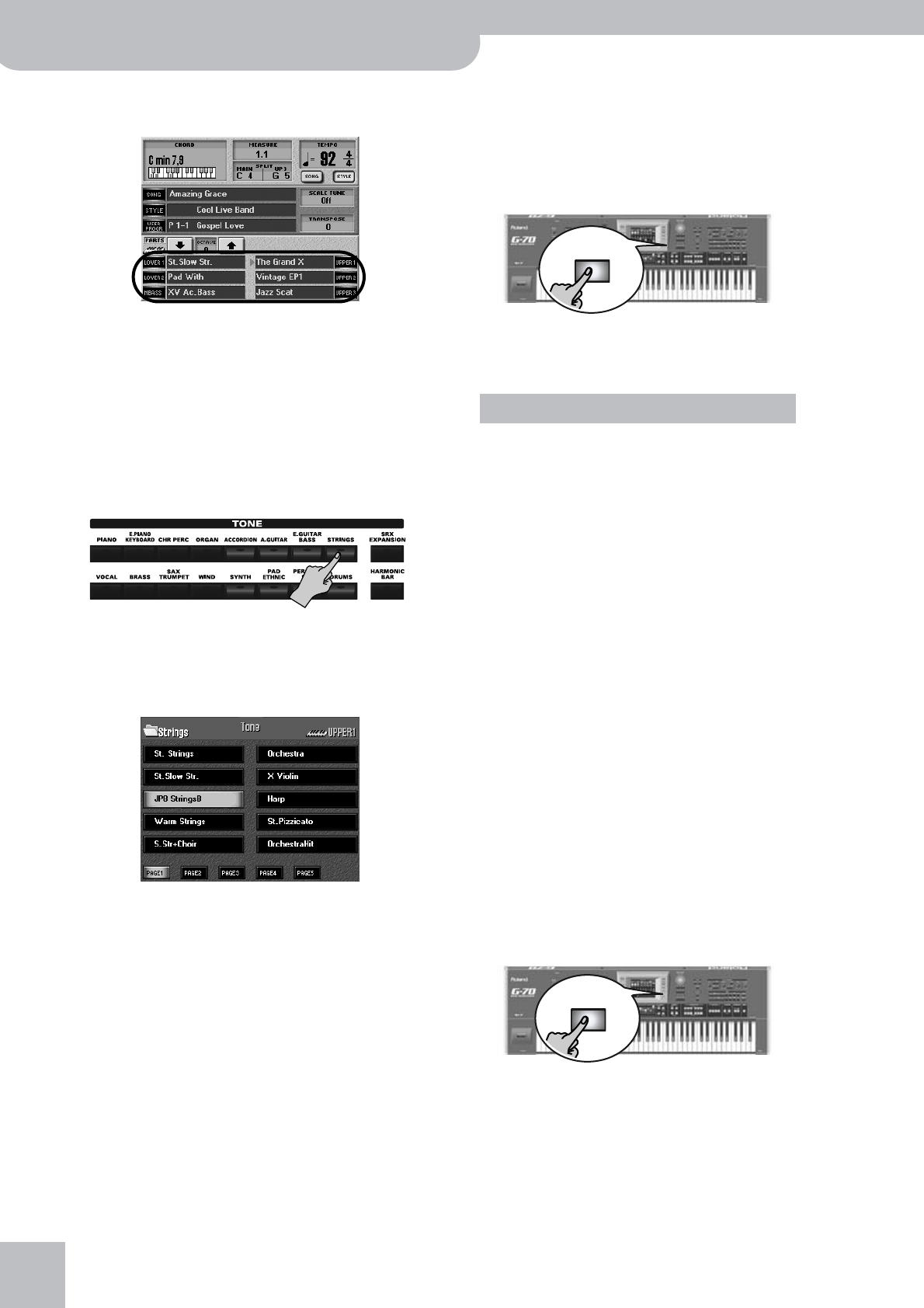
Quick Start
30
r
G-70 Music Workstation
• On the main page, press the row of the part you wish
to assign a different sound to.
In this case, the G-70 directly jumps to the TONE
page that contains the currently selected sound.
The red arrow indicates which part is active for Tone
selection (its TONE ASSIGN button also lights).
Note: It is also possible to select sounds for Keyboard parts
that are currently switched off. This allows you to prepare the
next sound(s) while still playing another Keyboard part.
(2) Press a TONE button to select a family and its
“best” sound (the sound already changes at this
stage).
See page 33 for the [HARMONIC¥BAR] sounds and
page 32 for the [SRX¥EXPANSION] button.
The display shows a list of Tones available in that
family:
Entries with an [EXP] icon to the right of their name
are sounds that reside on the SRX-series expansion
board you installed. Their names are automatically
assigned to the correct families (and displayed on the
last page of the selected family).
(3) Press the field of the desired sound. If you don’t
like it, press another field.
The last sound you select in each family is memorized
temporarily and will be recalled every time you press
the corresponding TONE button. (That selection can
then be changed by pressing another field.)
(4) If you are still not happy with the Tone, use the
[PAGE¥1]
~
[PAGE¥5]
and
[˚] fields to select the cor-
responding page (if available).
The [˚] field is only displayed if there are more than
five pages. Other Tone families have fewer than five
pages. This depends entirely on the Tone family you
select.
(5) Press the field of the desired sound.
(6) Press the [EXIT] button to return to the main page.
Next time you select this TONE family, the G-70
automatically jumps to the page that contains the
last sound you selected (and activates it).
Try playing the Tones you select at different velocities
(strengths) to discover the rich nuances that can be
obtained. (See page 60 for details about how to set
the velocity sensitivity.)
There is a “JazzScat” sound (VOCAL family), for exam-
ple, with three dynamic levels that allow you to
sound “Doo”, “Bub” or “Daow”, simply by hitting the
keys softer or harder. Various guitar Tones provide
hammering-on/bending sounds when you strike the
keys as hard as you can.
Transposing the keyboard to the lowest octave (using
the OCTAVE parameter) sometimes allows you to play
some typical noises (scraping over the strings, hitting
the body of an acoustic guitar, etc.).
■Choosing the sound selection system (Sound Set
Mode)
The Roland engineers figured that you might feel
overwhelmed by the number of Tones available in
each TONE family. That is why the G-70 does not dis-
play all the sounds it contains when you switch it on
for the first time. This “restricted” display mode is
called “BEST SELECTION”. In this mode, only the “new”
sounds can be selected.
You may have grown fond of “older sounds” (from
the G and VA series) and wish to select them. In that
case, select “EXTENDED”:
(1) Press the [MENU] button.
About the G-70’s sounds
EXIT
MENU


















